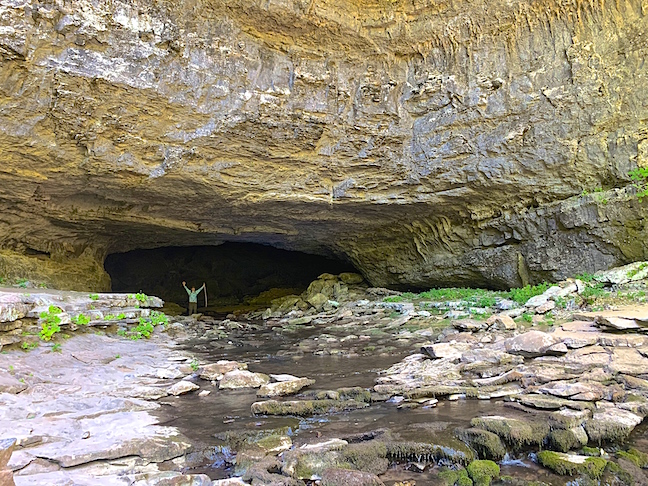Know when you go to Cumberland State Park, the hiking will be steep and rocky. In the Carter Natural Area of the Park is Lost Cove, where Buggytop Cave Trail is a tough two-miles, mostly downhill, making it a tougher two-miles coming back up the bluff.
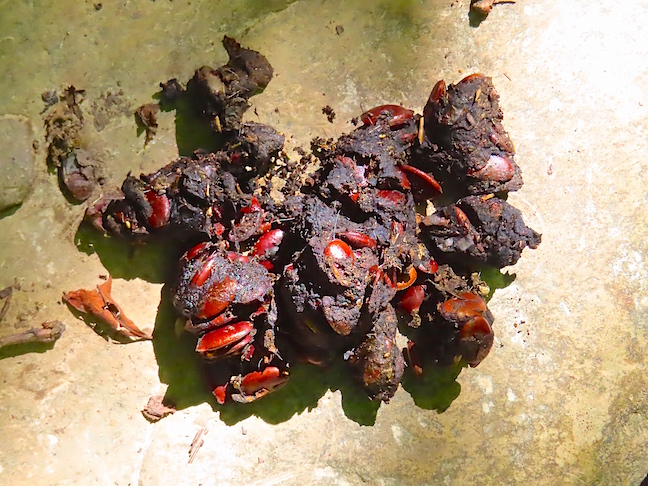
Finding fresh bear scat on a rock in the middle of the trail is not how you want to start an arduous hike. The local bears are gorging on everything they can put a paw on to gain weight for their soon-coming long snooze. Hiking guides suggest making noise as you walk through the woods to scare bears away. Karen alternates singing, shouting and blowing a whistle as I scrutinize the woods in the lead for the big predators that might be lurking for lunch. To be honest, we’ve never seen a bear while hiking. I credit Karen’s singing for keeping them away.
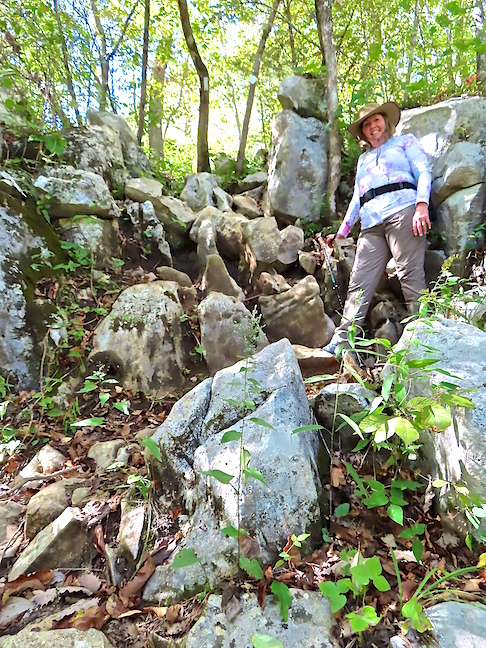
The Park Service warns not to make this hike alone. The falling rocks, slippery surfaces and cliffs make taking someone to lend a hand on the many steep ups and downs a godsend, and they can go for help if you manage to break yourself or get mauled by a bear.
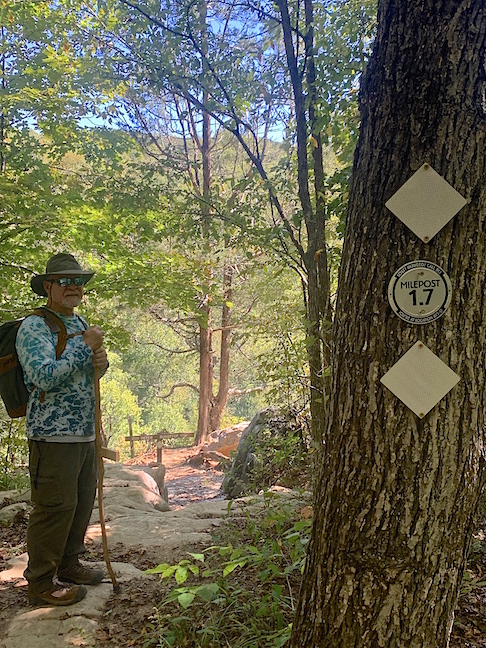
At the 1.7-mile mark, knowing most of the hike-in is behind you feels comforting. This is a well marked trail and much needed, as picking out the right path in areas of jumbled rocks is tricky.
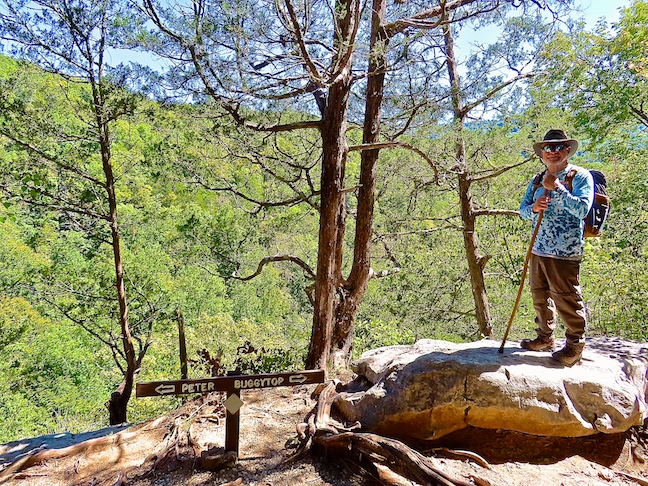
Just beyond this split-trail sign, is a sheer cliff that plummets to the Buggytop Cave’s entry level. Looking over the edge, the difficulty ahead sinks in. There are three entrances to Lost Cove Cave and Buggytop is the grandest.

The Buggytop Cave’s entrance is 100-feet wide and 80-feet high. The first glimpse is more impressive than we could capture with a camera.
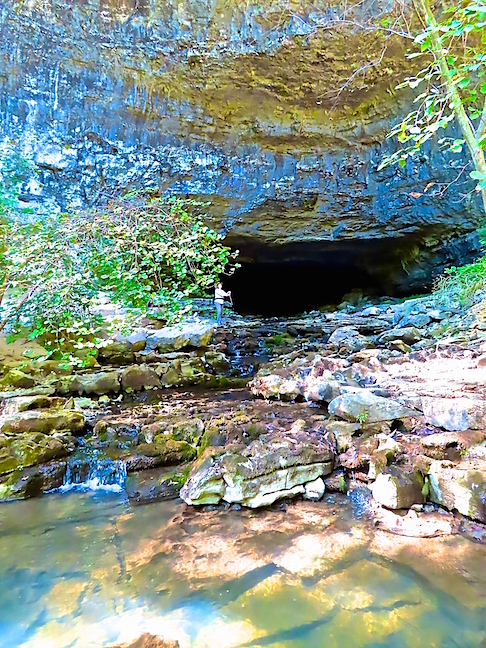
Lost Cove Creek disappears into Big Sink 1-mile underground from the Buggytop Cave entrance and emerges as Crow Creek for the rest of its run. The first 375-feet of the streams passage inside the cave from this point is 60-feet wide and 40-feet high. A free permit is required to explore the cave deeper and park rangers offer reservations for guided tours.

It is forbidden to go beyond the reach of daylight, while bats are hibernating for fear of disturbing or infecting them. 975-feet into the cave is the largest chamber and measures 200-feet wide and 300-feet long. We respected the bats’ privacy and did not pass, “where the sun don’t shine.”
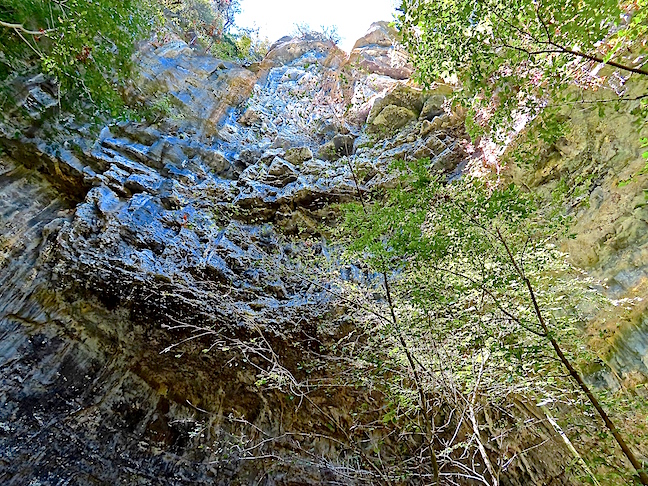
Peering up at Buggytop Cave’s overhang from the entrance, prompted us to return to the car before dark. After the precipitous trek out, I asked Karen if she’d like to go back when we could explore deeper into the cavern. Her reply, a flat, “NO.”


